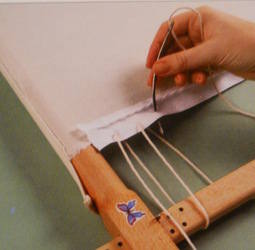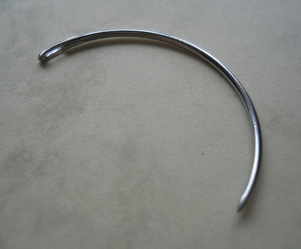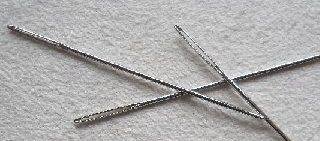Needles - A quick guide
Posted on
Knowing about your embroidery equipment is very important, and none more so than your needles! Here is a quick guide to choosing the right one:
Types of needles and when to use them:
Tapestry needles: These needles have a blunt end so they easily go through the holes in the canvas without splitting any threads, and an elongated eye for easy threading of different types of embroidery threads. Use on canvas, even weave fabrics and linens for counted work.
Embroidery needles: Long thin eye to allow for easy threading of embroidery threads. Sharp point for use on closely woven embroidery fabrics.
Sharps: Sharp point but with a short fat eye to take single sewing threads. Use for general purpose sewing and dressmaking.
Some other types of needles:
Crewel - a large embroidery needle; beading needles - long and thin with small eyes allowing beads to be threaded on; chenille needles - like tapestry but with a point for open weave fabrics. See below for even more!
Chosing your needle size:
The higher the number, the finer the needle. The needle makes the hole for the thread to pass through, not the thread. If you can hear the thread go through the fabric, then the needle is too small. Equally, if the needle is too big, it will leave a hole.
Use the guide above to help you to choose a needle but try different needles out to see what the differences are. You will soon find what works well for you and what doesn't
Buying needles:
There are a range of specialty needles available in my shop so if you are struggling to find the specific one you need. Check them out here
Bracing or curved spring needles are great for framing up your frame with string to make it extra tight. These needles are exceptionally sharp (use with care!) making them perfect to go through herringbone tape and fabric and the eye is big enough to thread white parcel string in:

Curved needles (fine and thick). Once you have tried one of these needles you will wonder how you ever managed without them! Useful for sewing on backing to mounted work, and any embroidery application where the fabric is stiff or hard to bend. Use the fine curved needle for fine and delicate fabrics and the thick needle for more sturdy fabrics:

Fine embroidery and crewel needles. Sometimes it can be hard to find very fine needles for delicate work. I have size 12, 10 and 9 embroidery needles available in packs of 10, (great for silk work, whitework, painting with the needle, and other delicate embroidery) and crewel size 7 good for Jacobean/crewel work:

Tapestry needles in three sizes for canvas work and blackwork:

